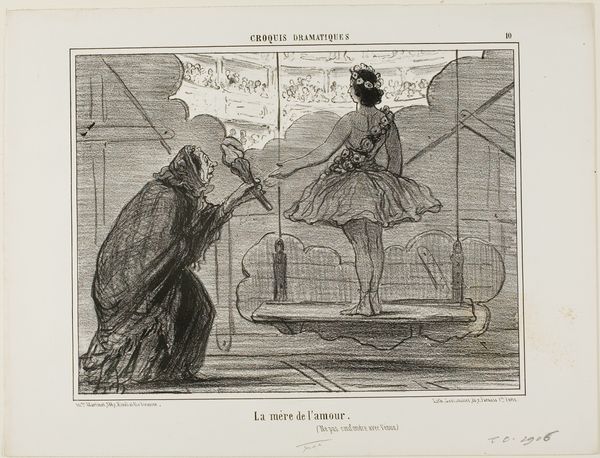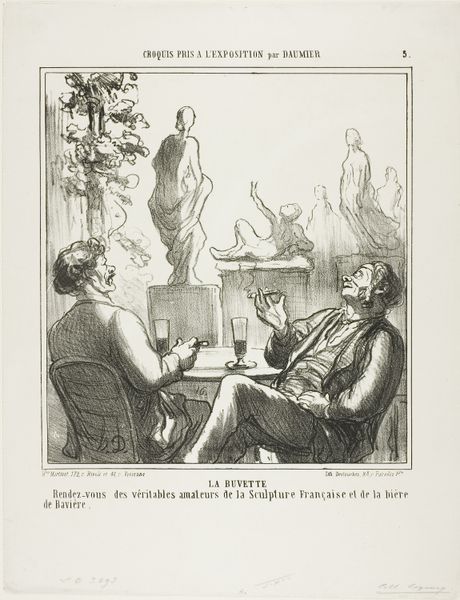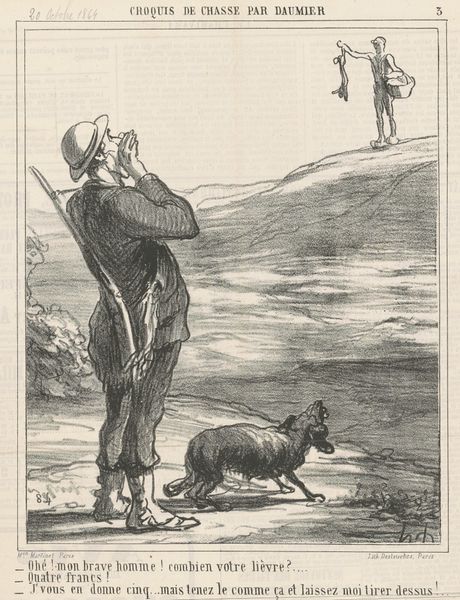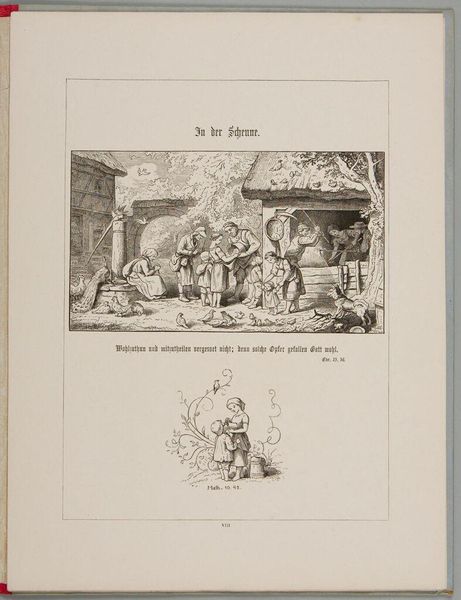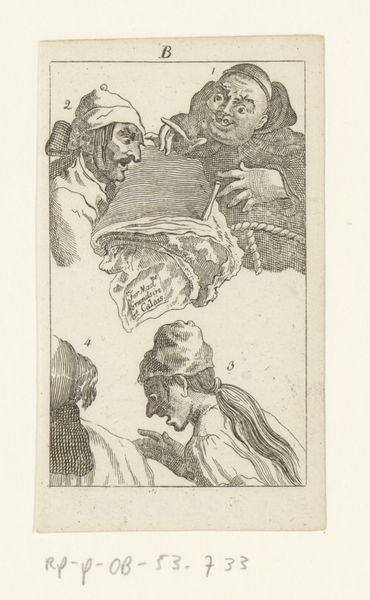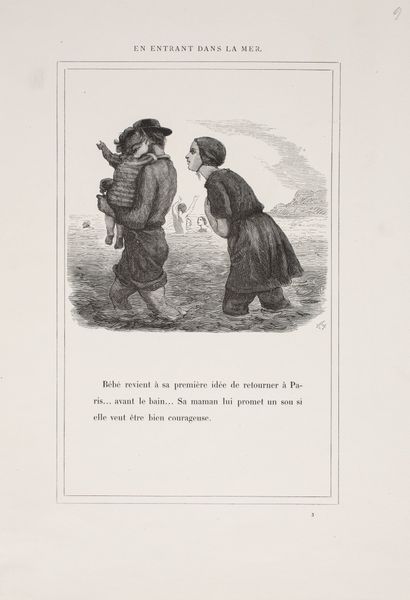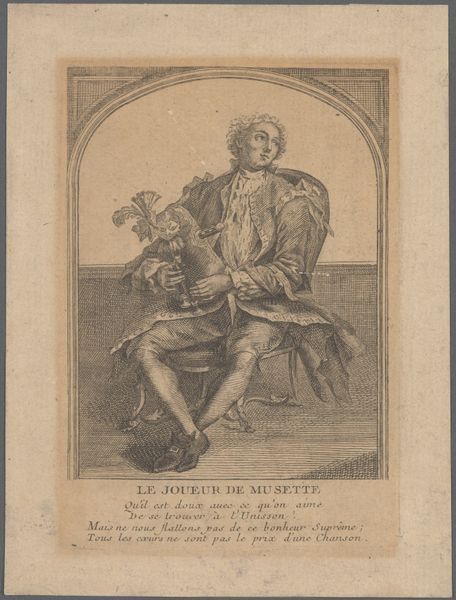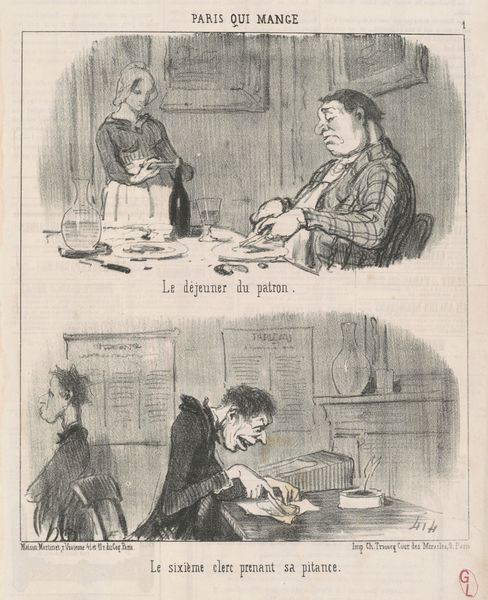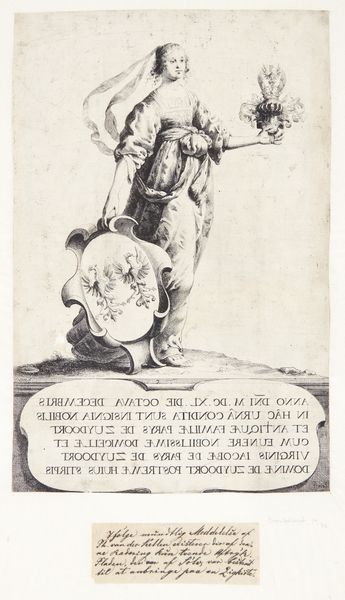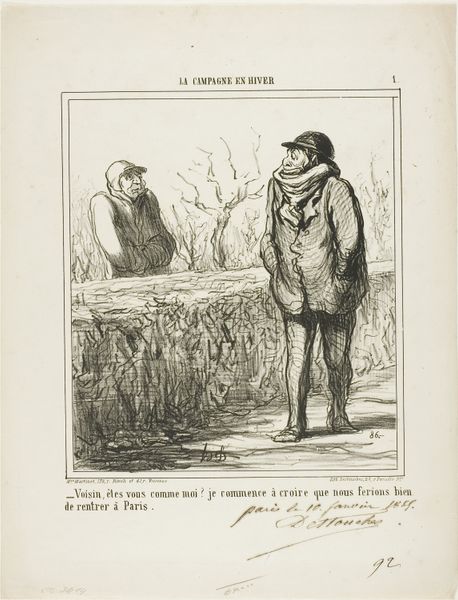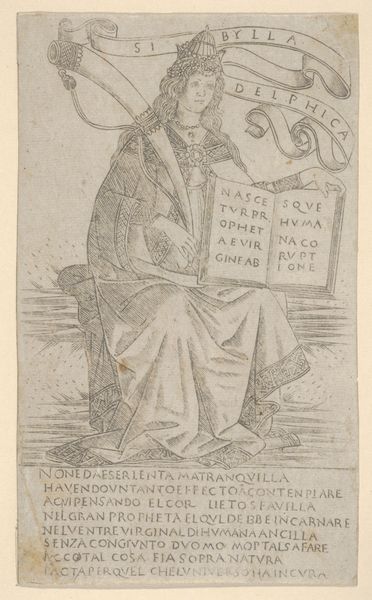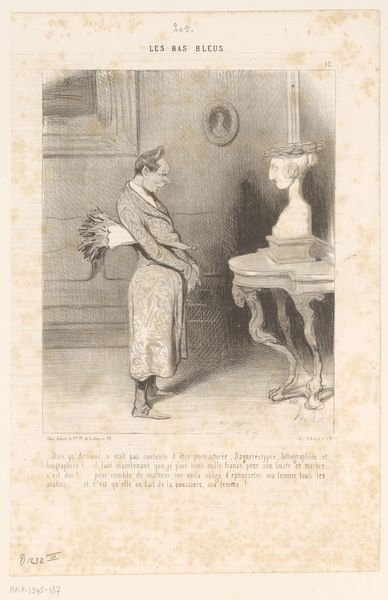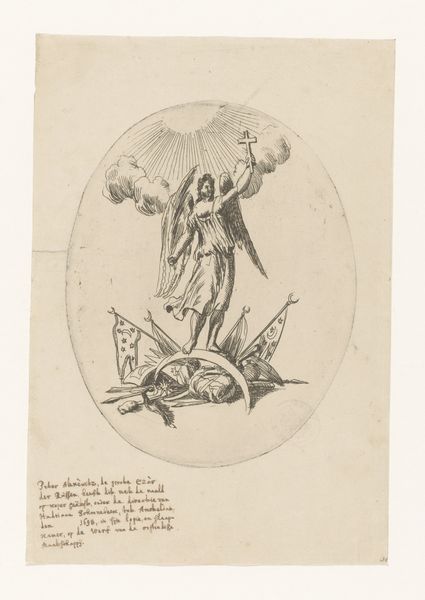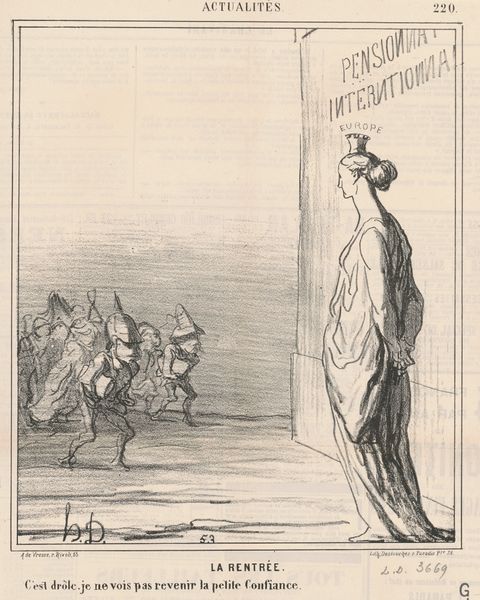
lithograph, print
lithograph
caricature
figuration
history-painting
Copyright: National Gallery of Art: CC0 1.0
Curator: "Le Président de la diète", a lithograph by Honoré Daumier from around the 19th century, portrays a rather distressed-looking man under the threat of two swords. I'm immediately drawn to the social commentary embedded in this work. How do you interpret it? Editor: The "double Damocles" in the title makes me think about a constant, impending threat hanging over the man. He seems trapped. Are the swords a literal danger or more symbolic of the political climate? Curator: That's an excellent question. Daumier was a master of political caricature, and his work frequently engaged with the social and political issues of his time. Notice the text above each sword: "Prusse" and "Autriche", Prussia and Austria in French. Considering the date, June 22, 1866, just before the Austro-Prussian War, it seems likely Daumier uses this image to depict the president of the Diet caught between these two powerful and conflicting forces. Editor: So the image itself becomes a political stage? With the president as a figurehead in the center? Curator: Precisely. The entire composition and imagery serves as an explicit visual commentary on a critical moment in European history. But it also speaks to how institutions, even in the presence of individual actors, are molded by larger forces. How might this image affect the perception and understanding of politics for the viewer? Editor: It's interesting to think how accessible this political commentary would be to the public. And it makes me consider the responsibility of artists during times of conflict. Thank you, it changed how I understood it. Curator: It has made me see the direct link between public sentiment and the imagery circulated around war.
Comments
No comments
Be the first to comment and join the conversation on the ultimate creative platform.
